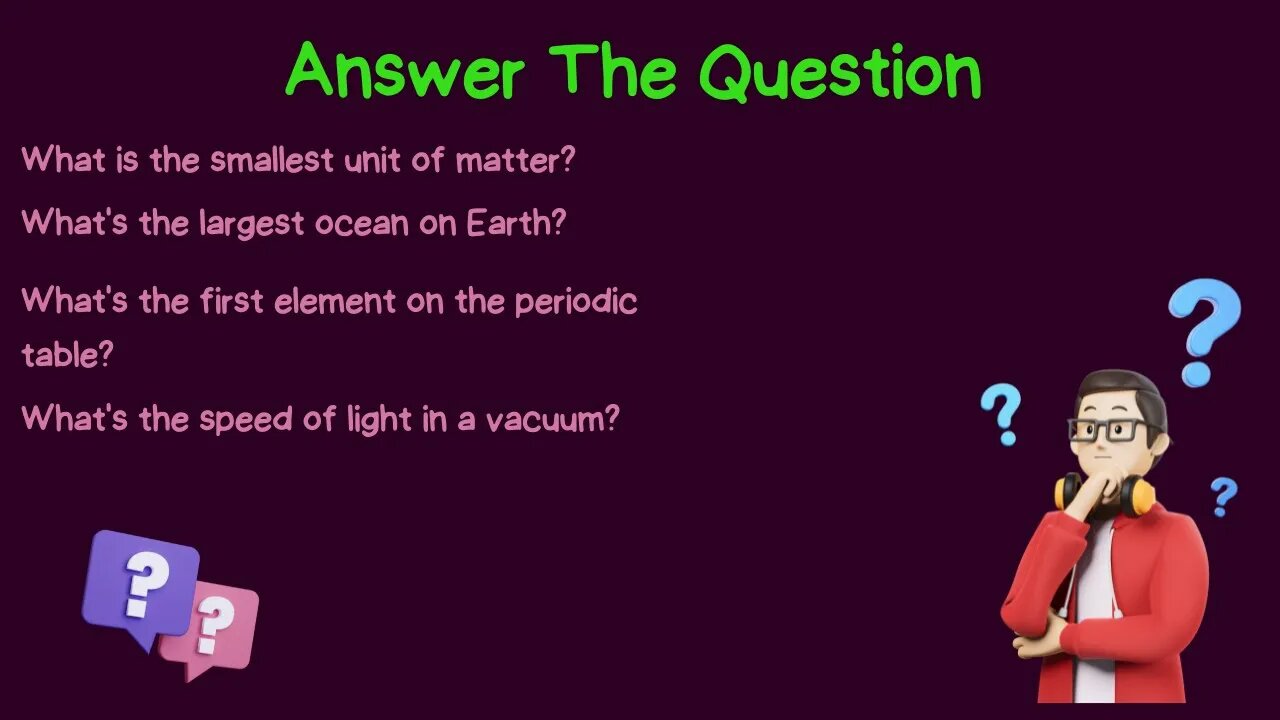Premium Only Content

Question Answer Episode 5
A "Question Answer" system refers to a technological solution designed to automatically generate accurate and relevant responses to user-posed questions. It employs natural language processing (NLP) techniques and machine learning algorithms to understand the semantics and intent behind a question and subsequently provide a coherent and informative answer.
The system typically consists of two main components: a question understanding module and an answer generation module. The question understanding module dissects the input question, analyzes its structure, identifies keywords, and comprehends the context to grasp the user's intention. This phase involves various NLP tasks such as tokenization, part-of-speech tagging, named entity recognition, and syntactic parsing.
Once the question is understood, the answer generation module employs a range of strategies to produce a relevant answer. These strategies may include information retrieval, where the system searches through a collection of pre-existing documents or a knowledge base to find relevant passages containing the answer. Alternatively, the system may use machine learning techniques such as sequence-to-sequence models or transformer architectures, like BERT or GPT, to generate answers from scratch.
To ensure the quality of the responses, a well-trained question-answering system should consider factors like the accuracy of the information provided, the coherence of the answer, and the context in which the question is posed. Evaluation metrics might include measures like precision, recall, and F1-score, which assess the correctness and completeness of the answers.
Question-answering systems find applications in various domains, including customer support, virtual assistants, educational platforms, and information retrieval from large datasets. They play a vital role in improving user experiences by providing quick and accurate solutions to inquiries, reducing the need for manual intervention, and enabling efficient access to information.
Overall, a robust question-answer system merges advances in NLP and machine learning to bridge the gap between human language and machine comprehension, transforming the way users interact with technology to acquire information and resolve queries.
-
 LIVE
LIVE
Darkhorse Podcast
2 hours agoThe 251st Evolutionary Lens with Bret Weinstein and Heather Heying
969 watching -
 1:31:54
1:31:54
The Quartering
3 hours agoTrump Wages WAR On Deep State, Twitch Is Collapsing, New Diddy Tapes, CIA LEAKS & More
48.7K19 -
 16:12
16:12
Mike Tyson
18 hours ago $0.25 earnedDavid Blaine, Al Pacino, Mike Tyson & VEGAS | BEHIND THE MIKE #003
1.04K2 -
 1:08:52
1:08:52
Russell Brand
2 hours agoTrump Appoints Elon & Vivek To DOGE As Elites LOSE THEIR MINDS + CNN & MSNBC In FIRE SALE! - SF492
111K170 -

Nerdrotic
5 hours ago $13.52 earnedUS Congress UFO Hearing LIVE REACTION with Chris Gore | Forbidden Frontier #081
55.5K10 -
 1:59:32
1:59:32
The Charlie Kirk Show
2 hours agoTear It Down, Build It Up + The Military in Crisis | Huckabee, Prince, Davis | 11.13.24
115K84 -
 LIVE
LIVE
Akademiks
2 hours agoKendrick Lamar Announces He Will Headline Superbowl 2025. Clowns Drake w/ sayin 'NO ROUND 2s'
3,524 watching -
 20:38
20:38
Misha Petrov
1 hour agoLeftist LUNATICS Can’t ACCEPT Trump’s Win! Uncovering Their Darkest WARNINGS to Trump Voters
23.8K16 -
 LIVE
LIVE
GameLeap RAID Shadow Legends
1 hour ago $0.20 earnedWE SOLVED SAND DEVIL! Top Tips Every New Player Needs - Raid Shadow Legends
205 watching -
 49:18
49:18
Grant Stinchfield
2 hours ago $5.06 earnedBallot Dumps, More Voters than Registered, Even Deleted Votes,,, It Looks Very Fishy!
23K11